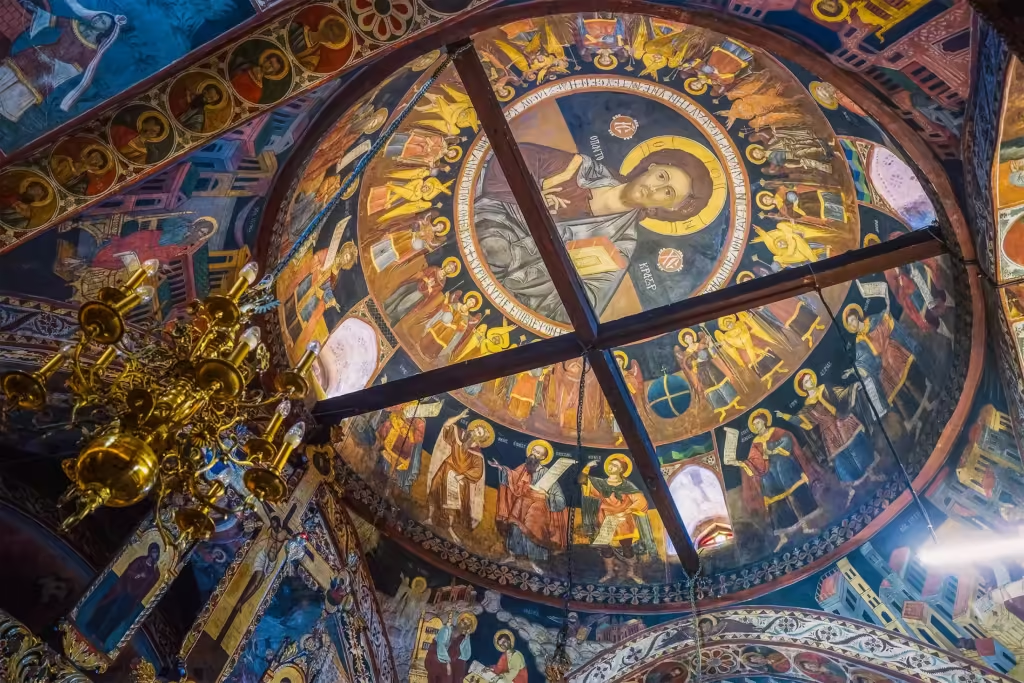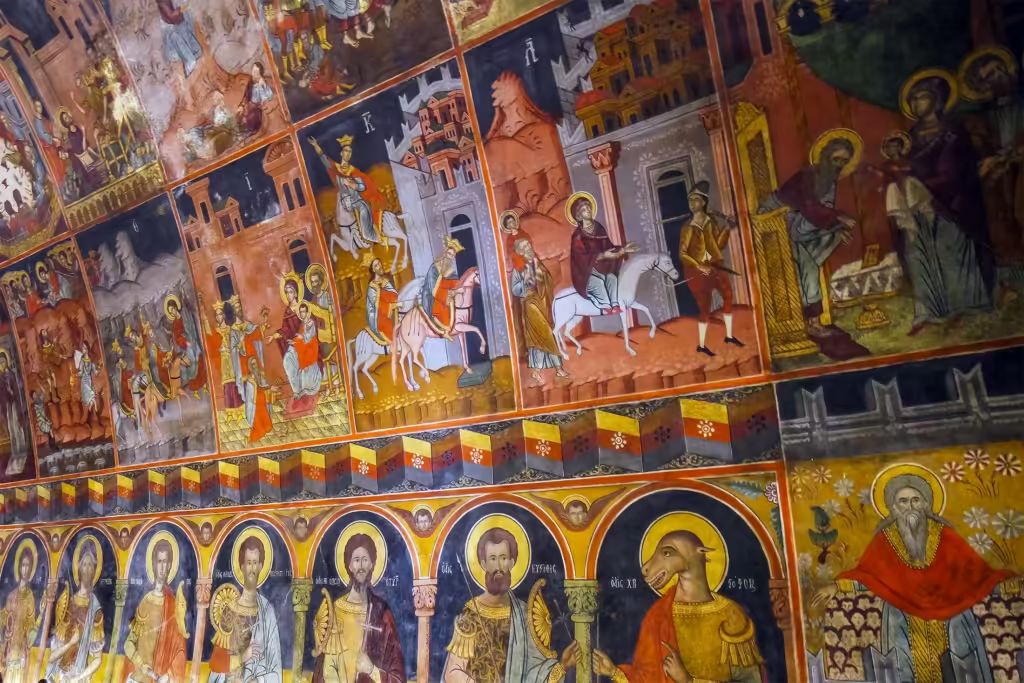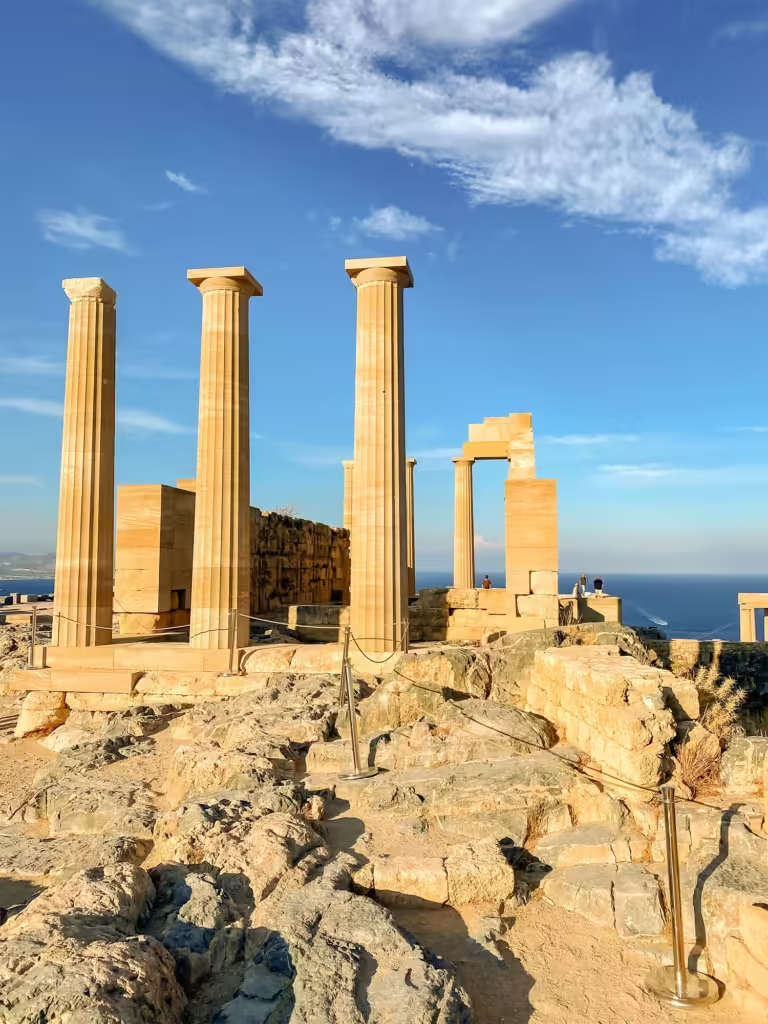
Church of Panagia in Lindos

Situated on the left of the road heading up to the Acropolis at Lindos, just a couple of minutes of walk from the main square into the labyrinth of Lindos alleys, the church of Panagia (Our Lady)¹ is an enchanting sight and an obligatory stop for all visitors. Surrounded by high walls and a small courtyard, this old church was originally built in 1300 but has since been submitted to numerous reconstructions. The most important was ordered by the Grand Master Pierre d’Aubusson (1476 to 1503) of the Knights of Rhodes (Order of St. John) and the most recent is dated in 1927, during the Italian occupation.
Its most prominent external feature is the high-rise, stone built campanile tower, typical of the Rhodian (and Dodecanese) churches. The main building has a cross-shaped plan superimposed by an octagonal dome, whitewashed walls and red byzantine tiles roof.



In the interior the pavement is covered by a superbly executed pebble mosaic (hohlaki), popular in the Rhodian traditional architecture. In the front, there is a richly decorated and spectacularly carved wooden iconostasis² and a Bishop’s throne while large bronze layered candle chandelier are hanging from above. Visitors will be astounded by the quality of the 19th century wall frescoes, depicting biblical scenes. The barrel-vaulted roof and the dome there covered with more impressive frescoes the work of the famous Gregorios of Symi dating back in 1779, depicting icons of Mary, Jesus, and the saints. As the viewers turn to the back of the church and walk out, over the doorway, a huge colorful fresco bursts with the story of The Last Judgment. Pale twisting bodies writhe together in the orange and red flames of hell. A strong message for those who won’t follow the ways of the church.
A device of the Grand Master D’Aubusson can be seen on the western door of the church as well as an inscription bearing the dates 1489/90, dates of the additions made to the building.
Panag(h)ia: one of the Greek Orthodox names used to address the Mother of God. In Orthodox art, the term Panaghia denotes an icon depicting the Virgin Mary with the Christ Child.
Iconostasis: a wall usually made of wood or marble, full of icons and religious paintings, separating the nave from the sanctuary in a church.


